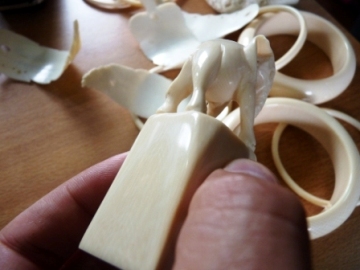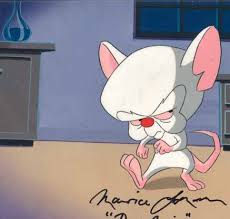
From
ABC newsReport Linking Vaccine to Autism 'Fraudulent,' Says British Medical Journal
By LARA SALAHIEditorial Suggests Dr. Andrew Wakefield, Who Linked Vaccine to Autism, Falsified Data Evidence published a decade ago, giving birth to the belief of a connection between vaccines and autism, has been deemed outright "fraudulent," according to an editorial published Wednesday in the British Medical Journal.
Dr. Andrew Wakefield, a former British surgeon, published research in 1998 that seemed to establish a link between vaccines and autism. But authors of the editorial confirmed previous suggestions that Wakefield skewed patients' medical records to support his hypothesis that the widely-used measles, mumps and rubella (MMR) combination vaccine was causing autism and irritable bowel disease.
The autism-vaccine link was one of the major medical controversies of the last decade.
"Clear evidence of falsification of data should now close the door on this damaging vaccine scare," the authors wrote in the editorial.
According to the editorial, Wakefield stood to gain financially from his purported findings because of his involvement in a lawsuit against manufacturers of the MMR vaccine. British news reports said Wakefield was hired as a consultant by lawyers trying to sue the vaccine's manufacturers. His compensation, they said, was about $750,000.
Wakefield's representatives would not offer an on-the-record comment today.
The editorial may not be enough to dissuade many people who believe Wakefield's claims, no matter how compelling the scientific evidence, according to Dr. Paul Offit, chief of the Section of Infectious Diseases at Children's Hospital in Philadelphia.
"It's unfair for the BMJ to call him a fraud, because as a fraud you have to have mal intent," said Offit. "But if you give Wakefield a lie detector test and ask him if he thinks MMR causes autism, he'd say yes. And he would probably pass, because he holds to it as one holds to a religious belief."
Science Lost in Personal Stories Wakefield's claim, first published in The Lancet, has since been roundly discredited. But though the paper was retracted from the journal in February 2010, it is still cited by some doctors and many parents of children with autism.
Colleen McGrath, 42, of San Diego, Cali, heard Wakefield speak at a local autism conference in July 2010 and said she knew she was doing the right thing by selectively choosing which vaccines would be best for her two children.
McGrath's children do not have autism. But as preschool teacher, she said she and her colleagues began wondering whether there was a connection between some of the children who were vaccinated and their subsequent diagnoses of developmental disorders.
So at the time, McGrath held off on giving her son, now age 9, the second of the two doses that make up the MMR vaccine. And now she says she does not plan to vaccinate either of her children against whooping cough.
"I don't know if I did right or wrong, or whether vaccinating them would make a difference," said McGrath. "But I'm taking precautions because of what I've researched and seen and heard from friends, teachers, and other parents."
McGrath said "I felt sick to my stomach" when she heard that Wakefield's paper included skewed data. But she says she still believes the purported connection.
"Some of these kids [I saw] have been profoundly affected," she said. "He was presenting sick kids that were getting better. He was healing these kids and I don't understand why he was doing the wrong thing."
Wakefield Culprit Public Health Outbreaks, Many Experts SayAlthough Wakefield's 1998 paper only suggested a connection between autism and the MMR vaccine, public suspicion spread to nearly all other routine vaccines.
"People are far more compelled by fear than reason," said Offit.
Over 90 percent of school-aged children are vaccinated against MMR in most schools nationwide, according to a 2010 report by the U.S. Centers for Disease Control and Prevention. Still, mumps cases are the second highest reported disease among all of the vaccine preventable diseases, according to the CDC.
Many experts said many parents more often question whether their children should receive other vaccines such as pertussis or whooping cough, or varicella, known as chicken pox.
"There is no doubt that the unsubstantiated concern regarding the MMR vaccine caused by Dr. Wakefield has resulted in many cases of vaccine preventable diseases," said Dr. Gary Freed, director of the division of pediatrics at the University of Michigan Health System.
For some families concern over one vaccine spiraled into fears of others, said Freed.
"The damage that occurred over those years as a result of these concerns--outbreaks of vaccine preventable diseases and in some cases, deaths-- cannot be reversed," said Dr. Ari Brown, a pediatrician in Austin, TX, and author of the "Expecting 411" book series.
While many experts trace the steps of vaccine scare back to Wakefield's initial report, it is now time to let science move all further research, said Offit.
"He made an extraordinary claim with no extraordinary evidence," said Offit, adding that the belief is so ingrained among many, including Wakefield himself. "The only way for this issue to be put to rest is when we have a clear cause of autism," said Offit.
David Amaral, Beneto Foundation chair and research director of The M.I.N.D. Institute at the University of California, Davis, agreed, adding that many in the scientific community have already let the paper go. The public should do the same, he said.
"What is most destructive in an episode such as this is the undermining of the public's confidence in the integrity of science," said Amaral. "Without replication, fraud and poorly conducted research will not stand the test of time."
 About the Journal
About the Journal 
















